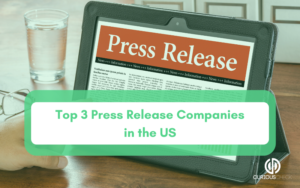Public Relations ROI
As marketing budgets shrink, there is increasing pressure to show return on public relations (PR) investment. But measuring PR ROI (return-on-investment) has always been a tricky proposition.
There is seldom a direct correlation between how much an organization spends on PR and how much business it pulls in.
Indeed, PR implicitly resists hard ROI metrics.
Public relations is about heightening company/product awareness and promoting a positive reputation.
How do you catch, let alone measure, buzz in a bottle?
The measure most widely used to determine PR success is the number, frequency, and breadth of media clips secured.
But the scope of possible PR objectives is wide and success cannot be reliably gauged by clip volume alone.
Let’s say positioning the company as a leader in technology innovation is among your top PR goals. After a year’s time, you’ve won a handful of prestigious industry awards and earn several glowing product reviews…
You are invited to participate in speaking roundtables and have routinely carved out column inches in articles featuring the two or three top competitors in your technology sector.
Still, there is no mathematical formula that connects PR activities and the short-term and longer-term business impact these activities have on the brand or company. The value of PR remains difficult to quantify.
That said, it’s important to determine what can and can’t be quantified. Or, put another way, you need to determine how to assess both intangible and tangible ROI—in demonstrating the value of PR to your organization.
The following identifies each component of a PR program and how to go about assessing success:

1. PR Messaging: Standard Deliverables
This includes all documents and PR messaging authored and issued by your account team: press releases, editorial pitches, speaking proposals, articles, and white papers.
If the new SATs can score essays, surely you can assess these communications for grammar, message, and tone.
2. PR Outcomes
As mentioned above, counting the number and assessing the breadth of media placements is one metric—and an important one in determining Public Relations ROI—BUT this does not by itself tell a complete story.
You need to gauge the quality of these placements.
Clients assume their PR initiative is successful if they get coverage in the Wall Street Journal or Information Week.
Sure, you’ve managed to appear in a top-tier publication and will be seen by a significant slice of your target market. Which is no mean achievement.
But your ultimate PR objective is to secure coverage that amplifies your core message (and positively supports your market positioning).
What will readers come away with? What action(s) will they take?
This also applies to product reviews. It’s one thing to convince a reviews editor to take your software into the lab…it’s quite another if the review falls short of expectations.
So again, the quality of coverage must be factored in as you assess the clips that come across your desk.
Typically, one of your top PR objectives is gaining recognition in a competitive market— which means you want to make sure to appear in every article mentioning your chief competitors and that you stack up well in head-to-head roundups or comparisons.
Again, you need to go beyond clip count and consider the quality of your coverage, particularly as it relates to your competitors.
3. PR Impact
Roughly speaking, there are two types of impact: PR that prompts specific actions and PR that demonstrably changes perceptions.
The first can be gauged in the short term; the second is more elusive and can only be gauged over a longer haul.
Short-term PR impact
• Calls/e-mail: How many calls or e-mails have resulted from your specific PR initiative?
• Web site visits: An article appears in a prominent trade journal and lists your URL, but the question is, how many have visited your Web site as a result?
In other words, what type of referral traffic did you gain from the distribution to these media companies?
Long-term PR Impact
Reputation, brand equity, market leadership…
These are all critical measures of PR success.
But it takes time to move the needle…it’s less about acceleration and more about gradual momentum.
Indeed, it may take a year or more before you make discernable progress in burnishing your reputation, building your brand, and asserting market leadership.
The best way of measuring success is by querying industry analysts and conducting surveys of customers and prospects.
4. Connection to Business Objectives
The ultimate metric is in determining the relationship of PR and market penetration, market share, sales, and profitability.
It is also near impossible to isolate PR and reliably quantify its impact on these key business objectives.
In this regard, it is more useful to view PR as a tool in achieving these objectives.
In another “Power Tools” advisory (Use It or Lose It: Using PR to Drive Sales), we draw distinctions between passive and active PR and show how the latter can—and should—be put in the service of sales (which goes to the other business objectives mentioned).
Assessing the quality of PR communications, measuring PR outcomes, understanding the short-term and long-term impact of all initiatives, and connecting PR to business objectives, are all critical to your ability to maximize your PR ROI.
But when you come right down to it, determining Public Relations ROI is about as scientific as former Supreme Court Justice Potter Stewart’s definition of what we’ll call adult material:
“I can’t define it,” said Justice Stewart, “but I know it when I see it.”





















